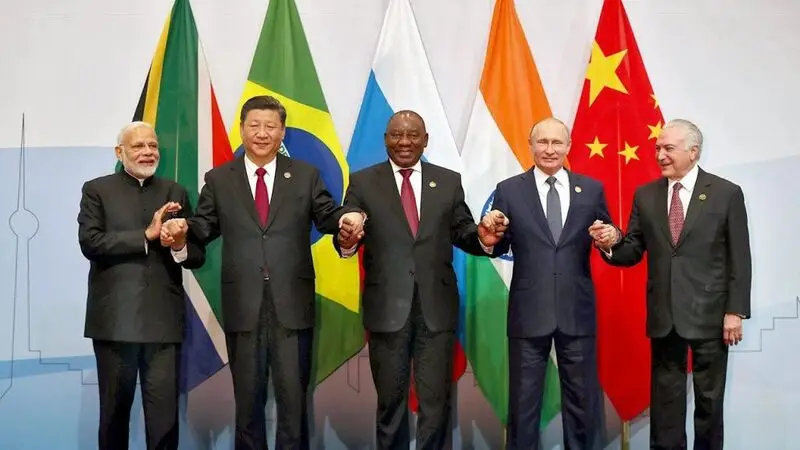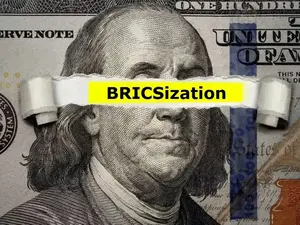The GDP of BRICS countries has outperformed market expectations and is exceeding the global average in 2025, according to the World Economic Outlook report published by the International Monetary Fund (IMF). The US, on the other hand, is distantly behind as its economy is growing in a limited manner this year.
Also Read: 3 Conditions BRICS Must Meet Before Launching New Currency
In 2025, BRICS countries, Brazil, Russia, India, China, and South Africa’s GDP saw a combined growth of 3.4%, which exceeded expectations. The current consensus forecast predicts the GDP growth of the US at only 1.4% in 2025. The US economy is lagging behind this year with minimal growth, and the tariffs are threatening what little is left.
Below is the list of BRICS countries’ GDP projections for 2025:
Ethiopia (6.6%)
India (6.2%)
Indonesia (4.7%)
United Arab Emirates (4%)
China (4%)
South Africa (3.4%)
Brazil (2.3%)
Also Read: De-Dollarization Gains Momentum: 50+ Countries Abandon US Dollar Dominance
BRICS GDP Shines in 2025, US Economy On the Razor’s Edge

The latest data from the IMF also shows that BRICS accounts for 40% of the global GDP in 2025. That’s massive as they already cover nearly half of the world’s economy. They’re Purchasing Power Parity (PPP) is projected to reach 41% this year, signifying that the alliance is growing rapidly.
Also Read: De-Dollarization Grows Massive in Asia: Firms Demand Local Currencies
“There is no way that BRICS is not relevant, given the size of its population (and GDP in 2025). And there are also countries that are key in the supply of commodities, such as Brazil and Russia, which supply energy, food, and even very important strategic minerals,” said Rodrigo Cezar, Professor of International Relations at the Getulio Vargas Foundation (FGV) and a specialist in international political economy.
“So the BRICS countries are going to be very relevant in terms of dictating or giving direction to the prices of these materials,” leaving the US economy under its mercy, explained Cezar. BRICS GDP could pressurize the markets in 2025, leading to it dominating the prices of the commodity markets this year.






